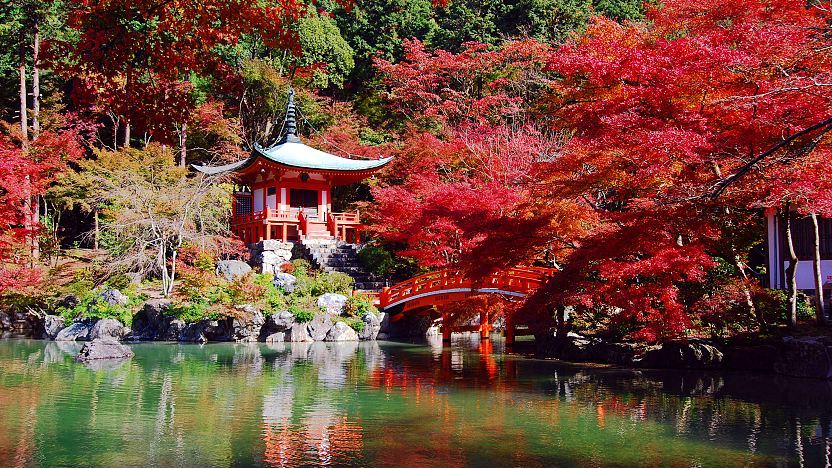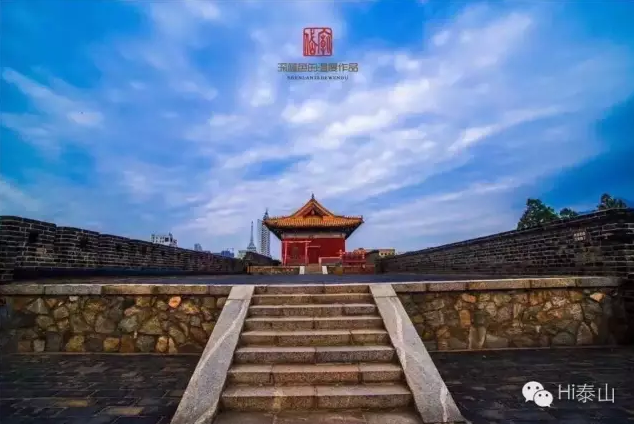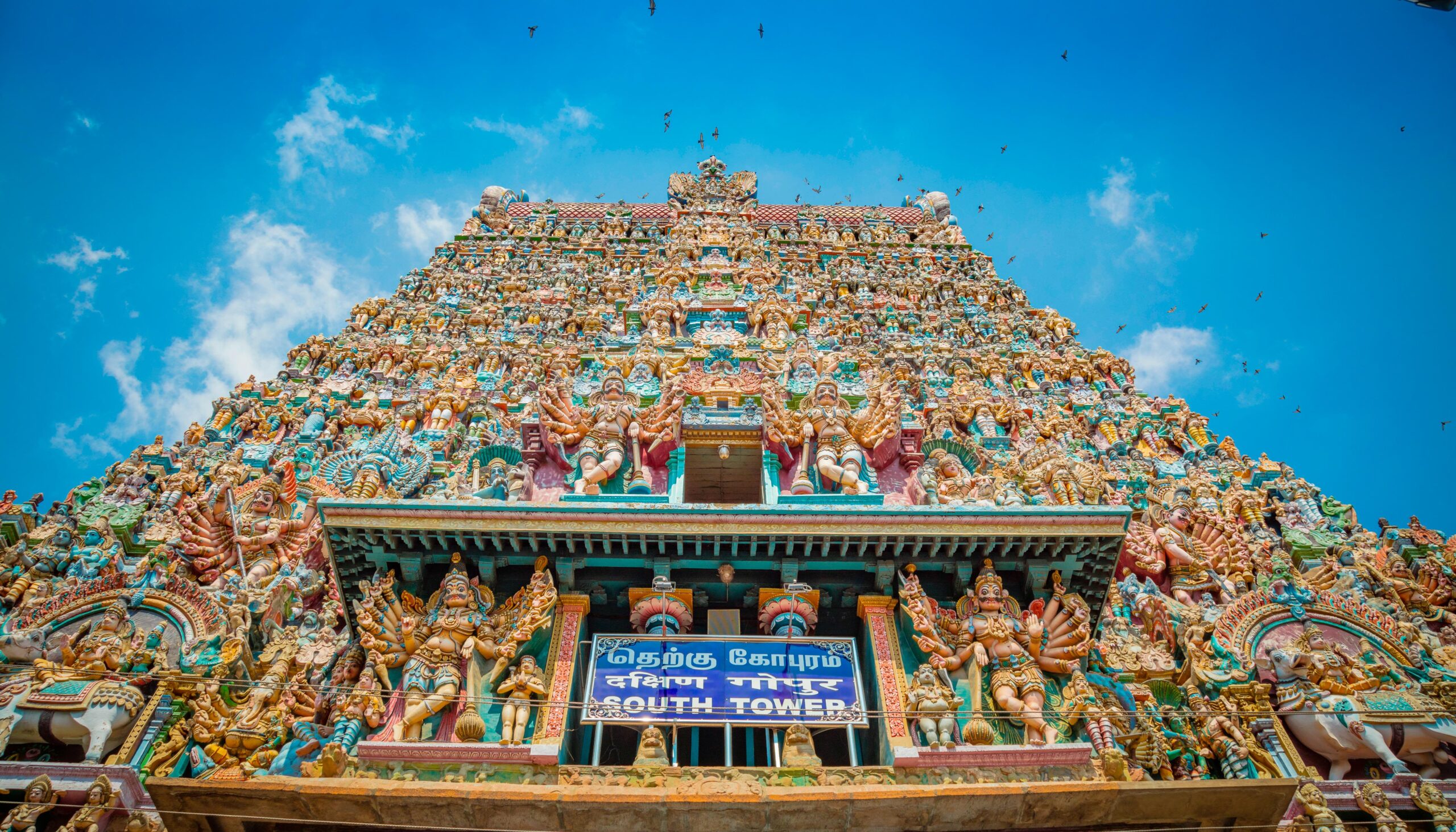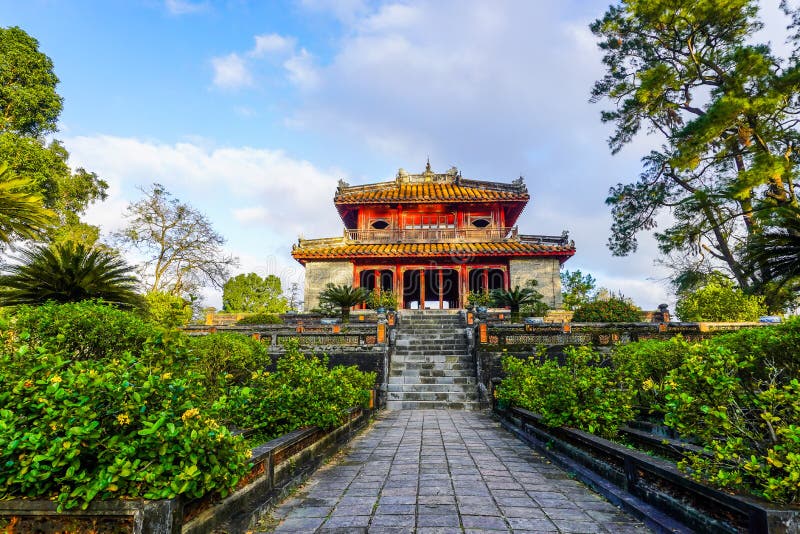Unveiling Dai Temple Heritage: Exploring Ancient Architecture and Culture

An Essential Guide to Visiting Dai Temple Heritage
In This Guide
- An Essential Guide to Visiting Dai Temple Heritage
- The Rich History and Legends of Dai Temple Heritage
- Main Highlights: What You Absolutely Can’t Miss
- Planning Your Visit: A Practical Guide
- Tickets: Prices, Booking, and Tips
- How to Get There: A Complete Transportation Guide
- Local Cuisine and Accommodation Nearby
- Frequently Asked Questions
- Final Thoughts on Your Trip
Nestled at the southern foot of the revered Mount Tai, the Dai Temple stands as a timeless testament to China’s rich tapestry of history and spirituality. Renowned as one of the four most well-preserved ancient architectural complexes in the country, this Taoist sanctuary has captivated visitors for centuries with its majestic halls and intricate artistry. Originally constructed during the Han Dynasty, the temple served as a sacred site where emperors honored the gods of Heaven and Earth, as well as the deity of Mount Tai, Emperor Dongyue.
As you step through the towering Zhengyang Gate—the grand entrance historically reserved for emperors—you are transported into a world where the past and present intertwine. The temple grounds boast a wealth of architectural wonders, from the stunning murals of the Song Dynasty in Tianfu Hall to the exquisite stone tablets that echo the artistry of ancient calligraphy. Each corner of Dai Temple is steeped in significance, inviting you to explore the depths of Taoist culture and the profound rituals that once defined imperial worship.
Beyond its impressive structures, Dai Temple is enveloped by lush gardens that house ancient trees, some of which date back thousands of years. Among them, the celebrated Han Cypress stands as a living relic of history, whispering stories of emperors and sages alike.

Dai Temple Heritage.
Whether you are a history buff, a cultural enthusiast, or simply a curious traveler, a visit to Dai Temple promises a rich and enlightening experience. Prepare to immerse yourself in the serene beauty of this sacred site, where every stone and mural has a story to tell, and every moment spent here draws you deeper into the heart of China’s enduring spiritual heritage.
The Rich History and Legends of Dai Temple Heritage
Nestled at the foot of the majestic Mount Tai in Tai’an, Shandong Province, Dai Temple (岱庙) stands as a monumental testament to China’s rich historical and cultural tapestry. Established during the Han Dynasty (206 BC – 220 AD), this ancient Taoist temple served as a sacred site where emperors performed sacrificial rites to the gods of Heaven and Earth, paying homage to the revered deity of Mount Tai. The temple’s historical significance extends beyond its architectural grandeur; it embodies the spiritual and philosophical essence of Taoism that has flourished in China for centuries.

Dai Temple Heritage.
A Journey Through Time
Architectural Marvel
Dai Temple is recognized as one of China’s four best-preserved architectural complexes, alongside the Forbidden City in Beijing, the Temple of Confucius in Qufu, and the Chengde Mountain Resort. The temple complex showcases a harmonious blend of elegant Taoist structures, intricate stone tablets, and lush gardens, all steeped in history. Each hall and pavilion within the temple is adorned with artistic carvings and murals that narrate tales of ancient deities and emperors, offering visitors a glimpse into the cultural richness of the past.
Sacred Rites
As a pivotal site for imperial worship, Dai Temple was an essential stop for emperors during their pilgrimage to Mount Tai, where they sought blessings and guidance from the heavens. The temple’s core building, Tianfu Hall, enshrines Emperor Dongyue, the god of Mount Tai, whose worship is central to the temple’s identity. The stunning murals within Tianfu Hall, painted during the Song Dynasty, depict the grand procession of the god, capturing the vibrant essence of ancient religious practices and beliefs.
Legends and Lore
The Legend of Mount Tai
Mount Tai, revered as one of China’s Five Sacred Mountains, is imbued with numerous legends that elevate its spiritual status. One popular tale speaks of a mythical dragon inhabiting the mountain, which, when awoken by the prayers of devoted emperors, would bring forth rain and bountiful harvests. This belief established a profound connection between Dai Temple and the prosperity of the land, reinforcing its importance as a site of worship.

Dai Temple Heritage.
The Han Cypress
Among the treasures of Dai Temple is the ancient Han Cypress, believed to be over 2,100 years old. Legends tell of Emperor Wu of the Han Dynasty, who planted these cypresses during his pilgrimage to Mount Tai. Even today, the trees stand resolute, symbolizing endurance and the timeless nature of faith. Visitors often whisper their wishes to the gnarled branches, hoping to receive blessings from the spirits of the ancients.
Stone Tablets of Wisdom
Dai Temple is also known for its impressive collection of stone tablets, often referred to as the “Dai Temple Stele Forest.” These tablets, inscribed with ancient calligraphy, serve as historical records that illuminate the development of Chinese writing and philosophy. The most renowned among them is the Li Si Xiaozhuan Stele, crafted by the famous Prime Minister of the Qin Dynasty, which encapsulates the artistic and intellectual achievements of the era.

Dai Temple Heritage.
Cultural Significance
Visiting Dai Temple is not merely an exploration of an architectural wonder; it is an immersive journey into the heart of Chinese spirituality and history. The temple complex serves as a cultural hub, attracting millions of tourists and scholars alike who seek to understand the foundational beliefs that have shaped Chinese civilization. The lush gardens, ancient trees, and serene atmosphere invite reflection and reverence, making it a sacred sanctuary for both worshippers and visitors.
In conclusion, Dai Temple stands as a beacon of China’s historical and cultural heritage, inviting travelers from around the world to explore its legendary past and appreciate the intricate relationship between nature, spirituality, and the imperial legacy of ancient China. Whether you are drawn by the call of its legends or the allure of its architectural beauty, a visit to Dai Temple promises to be an unforgettable experience steeped in history and reverence.
Main Highlights: What You Absolutely Can’t Miss
Discover the Wonders of Dai Temple: A Journey Through History and Culture

Dai Temple Heritage.
Nestled at the foot of the majestic Mount Tai, Dai Temple (岱庙) is not just a religious site; it is a treasure trove of Chinese history and culture that beckons travelers from around the globe. With a history dating back to the Han Dynasty, this Taoist temple complex serves as a profound testament to the spiritual and architectural heritage of China. Here are the unmissable highlights that will enrich your visit to this revered site.
1. The Majestic Tiankuang Hall
Tiankuang Hall is the centerpiece of Dai Temple, dedicated to the God of Mount Tai, Emperor Dongyue. The grandeur of this hall is amplified by its striking interior murals from the Song Dynasty that depict the deity’s legendary journeys. As you step inside, take a moment to appreciate the intricacy of the artwork while respecting the customs—shoe covers are required to preserve the delicate floors, and photography is not permitted inside.

Dai Temple Heritage.
2. Architectural Marvels
Dai Temple is renowned for its well-preserved architectural structures, which reflect the essence of ancient Chinese temple design:
– Linglong Archway: Towering at 12 meters (39 feet) high, this ornate archway features intricate carvings of dragons, cranes, and phoenixes, embodying the rich symbolism of Taoist culture.
– Bronze Pavilion and Iron Tower: These relics from the Ming Dynasty are located in the temple’s serene backyard. The Bronze Pavilion, often referred to as the “Golden Palace,” showcases exquisite craftsmanship and is a marvel of ancient engineering.
3. The Stele Forest
As you wander through the temple, don’t miss the impressive collection of over 300 stone tablets and inscriptions, earning Dai Temple the nickname “Dai Temple Stele Beilin.” Among these, the Li Si Xiaozhuan Stele stands out as a significant artifact, crafted by the Prime Minister of the Qin Dynasty over 2,200 years ago. For enthusiasts of calligraphy and history, this is a must-see.

Dai Temple Heritage.
4. Ancient Flora
The temple grounds are not only a feast for the eyes in terms of architecture but also in nature. The Millennium Han Cypress, believed to be over 2,100 years old, is a testament to the resilience of nature. Surrounding the cypress are several other ancient trees, each with its own history, enhancing the tranquil beauty of the site.
5. A Spiritual Experience
Dai Temple has long been a site of worship for emperors and common folk alike. As you explore, take a moment to reflect in the serene courtyards and listen to the whispers of history that resonate through the halls. The ambiance is imbued with a sense of peace and reverence, making it an ideal place for meditation and contemplation.

Dai Temple Heritage.
6. Cultural Insights
Engage with the rich culture surrounding Dai Temple by hiring a local guide. For a nominal fee, they can provide in-depth stories and historical context that will deepen your appreciation for what you are witnessing. Knowledgeable guides can also lead you to hidden gems and lesser-known tales that are not covered in guidebooks.
7. Surrounding Attractions
After your exploration of Dai Temple, consider venturing to nearby attractions:
– Mount Tai: A UNESCO World Heritage Site, this mountain is one of the Five Great Mountains of China and offers breathtaking hikes and stunning views.
– Dongping Lake: A serene spot for relaxation and recreation, where you can enjoy boating or cycling amidst scenic landscapes.
8. Local Cuisine
Conclude your visit with a culinary adventure in Taian. Don’t miss the chance to try local specialties such as Taishan Pancakes and Fried Chicken, which reflect the flavors of the region. The vibrant atmosphere of Taian Old Street, filled with food stalls and shops, offers a delightful way to experience local culture.

Dai Temple Heritage.
As you plan your journey, remember that Dai Temple is more than just an architectural marvel; it is a living testament to the spiritual and historical tapestry of China. Take your time to soak in the atmosphere, and allow the stories of the past to inspire your own adventures.
Planning Your Visit: A Practical Guide
Planning Your Visit to Dai Temple: A Practical Guide
Visiting Dai Temple (岱庙), a significant Taoist temple nestled at the foot of Mount Tai in Tai’an, Shandong Province, promises an enriching experience steeped in history and culture. The temple, with its impressive architectural complex and profound cultural significance, attracts millions of visitors each year. Here’s everything you need to know to make the most of your visit.
Getting There
Location:
Dai Temple is conveniently situated in Tai’an City, easily accessible from major transport hubs.

Dai Temple Heritage.
- By Train: Tai’an Railway Station is well connected to major cities like Beijing and Shanghai. From the station, you can take a taxi or a local bus to the temple.
- By Bus: Several long-distance buses run to Tai’an from nearby cities. Check local schedules for the most convenient options.
- By Car: If you prefer to drive, Tai’an is located on the G3 Expressway, making it easy to reach by car.
Opening Hours
- Daily: 8:00 AM – 5:30 PM (last entry at 5:00 PM)
- Note: It’s advisable to check for any seasonal changes in operating hours before your visit.
Admission Fees
- General Admission: Approximately CNY 80 (subject to change)
- Guided Tours: Renting a local guide can enhance your experience. Expect to pay around CNY 20 for insightful commentary on the temple’s history and art.

Dai Temple Heritage.
Key Attractions Within Dai Temple
-
Tiankuang Hall (天贶殿):
The most important hall dedicated to the God of Mount Tai, featuring stunning murals from the Song Dynasty. Remember to wear shoe covers before entering, and photography is prohibited. -
Linglong Archway (玲珑牌坊):
An architectural marvel standing at about 12 meters, adorned with intricate carvings of dragons and phoenixes. -
Stone Tablets (碑林):
Home to over 300 ancient steles, including the famed Li Si Xiaozhuan Stele, providing a unique insight into ancient Chinese calligraphy and history. -
Bronze Pavilion and Iron Tower:
These Ming Dynasty structures showcase exquisite ancient craftsmanship and are perfect spots for photography. -
Millennium Han Cypress:
A living testament to history, this 2,100-year-old tree is located in the temple courtyard and is a must-see for nature lovers.
Suggested Itinerary
Duration of Visit: 2-3 hours is recommended to fully appreciate the site.

Dai Temple Heritage.
Morning:
– Arrive early to avoid crowds.
– Start at Zhengyang Gate, the grand entrance, and make your way to Tiankuang Hall to admire the murals.
Afternoon:
– Explore the stone tablet area and take time to admire the intricate carvings and inscriptions.
– Stroll through the lush temple gardens, enjoying the tranquility and ancient trees.
Evening:
– Consider dining at a nearby local restaurant to savor traditional dishes, such as Taishan Pancakes and Fried Chicken, offering a delightful end to your day.
Tips for a Memorable Visit
- Dress Comfortably: Wear comfortable shoes as you will be walking on uneven surfaces and exploring multiple buildings.
- Stay Hydrated: Bring water, especially in the warmer months.
- Respect the Culture: Be mindful of the religious significance of the site; maintain a respectful demeanor and follow any posted guidelines.
- Photography: While some areas have restrictions on photography, the surrounding landscapes and architectural details provide ample opportunities for stunning photos.
Nearby Attractions
After visiting Dai Temple, consider exploring other nearby attractions:
– Mount Tai (泰山): A UNESCO World Heritage site, perfect for hiking enthusiasts.
– Dongping Lake: A scenic spot for boating and relaxation.
– Taian Old Street: Enjoy local delicacies and shop for souvenirs in this vibrant area.
Conclusion
Dai Temple is not just a visit to a historical site; it is an immersive journey into the heart of Chinese culture and spirituality. With its stunning architecture, rich history, and serene environment, this temple is a must-visit for anyone intrigued by the depth of Chinese heritage. Plan your visit with this guide, and be prepared for an unforgettable experience.
Tickets: Prices, Booking, and Tips
When planning your visit to the Dai Temple, a fascinating site steeped in Chinese history and culture, understanding the ticketing process and making the most of your experience is essential. Below, you’ll find detailed information on ticket prices, booking procedures, and helpful tips for an enriching visit.
Ticket Prices
As of the latest updates, the standard admission fee for the Dai Temple is CNY 30 per person. This ticket grants access to the temple complex, allowing you to explore its stunning architecture, historical artifacts, and serene natural surroundings. For students and seniors, discounted tickets may be available, so be sure to carry valid identification if you qualify.
Booking Tickets
Tickets for the Dai Temple can be purchased on-site at the entrance. However, to save time and ensure a smooth entry, consider booking in advance through various travel websites or local tour operators. Websites such as Trip.com and CITS offer online booking options that can be convenient for international travelers.
Tip: If you plan to visit during peak seasons, such as national holidays or weekends, it is advisable to book your tickets in advance to avoid long lines.
Additional Costs
While the entrance fee covers access to the temple, you may encounter additional costs during your visit:
– Shoe Covers: Required for entry into Tianfu Hall, these can be purchased at the entrance for a small fee (usually around CNY 5).
– Guided Tours: Hiring a local guide can greatly enhance your understanding of the temple’s rich history and cultural significance. Guides typically charge around CNY 20–50 per tour, depending on the duration and depth of the experience.
– Souvenirs: As you exit the temple, you’ll find small shops selling local crafts and memorabilia. Prices vary, so be prepared to bargain a bit for the best deals.
Tips for a Memorable Visit
- Plan Your Timing: Allocate about 2-3 hours to explore the temple thoroughly. This will give you enough time to appreciate the intricate murals, historical inscriptions, and lush gardens.
- Best Time to Visit: Early morning or late afternoon are ideal times to visit, as the lighting enhances the beauty of the temple and the surrounding landscape. Plus, you’ll avoid the midday crowds.
- Dress Comfortably: Wear comfortable shoes as you’ll be walking on cobblestone paths and exploring various buildings. Dress respectfully, as this is a sacred site.
- Stay Hydrated: Bring a water bottle, especially during the warmer months, to keep yourself refreshed as you wander through this expansive temple complex.
- Capture Memories: While photography is restricted in certain areas, such as inside Tianfu Hall, you can still take stunning photos of the exterior architecture and surrounding gardens.
By following this guide, you can ensure a seamless and enriching experience at Dai Temple, allowing you to immerse yourself in the spiritual and historical essence of this remarkable site in Shandong Province.
How to Get There: A Complete Transportation Guide
Getting to Dai Temple: A Comprehensive Transportation Guide
Nestled at the southern foot of the majestic Mount Tai in Tai’an, Shandong Province, Dai Temple (岱庙) is a significant Taoist sanctuary steeped in history. As one of China’s four most well-preserved architectural complexes, visiting this historical site offers international travelers a peek into ancient Chinese culture and architectural grandeur. Here’s how to navigate your way to this cultural gem.
Arriving in Tai’an
1. By Air:
The nearest major airport to Tai’an is Jinan Yaoqiang International Airport (TNA), located approximately 100 kilometers (62 miles) from the city. This airport serves both domestic and international flights, providing a convenient entry point into Shandong Province.
- Transportation from Jinan Airport to Tai’an:
- Airport Shuttle Bus: Direct shuttle buses operate between the airport and Tai’an, offering a cost-effective option for travelers. The journey takes around 1.5 to 2 hours.
- Taxi: For more convenience, taxis are available outside the airport. The ride will take about 1.5 hours depending on traffic and costs around CNY 300–400.
- Train: Alternatively, you can take a train from Jinan Railway Station to Tai’an Railway Station, which takes approximately 30 minutes.
2. By Train:
Tai’an is well-connected by rail, making it accessible from major cities in China. High-speed trains frequently operate from:
- Beijing to Tai’an: Approximately 2 to 3 hours
- Shanghai to Tai’an: Roughly 5 to 6 hours
- Qingdao to Tai’an: Approximately 3 to 4 hours
Arriving at Tai’an Railway Station, you can easily find local transportation to reach Dai Temple.
3. By Bus:
Long-distance buses also connect Tai’an with various cities in Shandong and nearby provinces. Buses from Jinan, the provincial capital, are frequent and generally take about 2 hours. Buses arrive at the Tai’an Bus Station, which is conveniently located near the city center.
Local Transportation in Tai’an
Once you arrive in Tai’an, getting to Dai Temple is straightforward:
1. Taxi:
Taxis are readily available throughout the city. A taxi ride from Tai’an Railway Station or the bus station to Dai Temple will typically cost around CNY 15–25 and take approximately 10–15 minutes.
2. Public Transit:
Tai’an has a reliable public bus system, and several routes can take you close to Dai Temple. Look for buses heading to Dai Temple Station (岱庙站), which is about a 5-minute walk from the temple entrance.
3. Walking:
If you are staying in a central hotel or guesthouse, walking to Dai Temple can be a pleasant experience. The distance from the city center is around 1.5 kilometers (about 1 mile), which can take approximately 20 minutes on foot.
Navigating Dai Temple
Upon arrival at Dai Temple, you’ll find various amenities including ticket booths and information centers. The temple complex is expansive, so be prepared to explore its many halls, pavilions, and stone inscriptions. It’s recommended to wear comfortable shoes and allow at least 2 to 3 hours to fully appreciate the site.
Tips for a Smooth Journey
- Language: While many signs are in English, having a translation app can be helpful as English is not widely spoken.
- Cash: ATMs are available, but it’s wise to carry some cash, as smaller vendors may not accept credit cards.
- Guided Tours: Consider hiring a guide at the temple for a more in-depth understanding of the rich history and cultural significance of the site.
With this transportation guide, you’re well-equipped to embark on an unforgettable journey to Dai Temple, where history and spirituality converge in the heart of China. Enjoy your visit!
Local Cuisine and Accommodation Nearby
Exploring the rich heritage of Dai Temple (岱庙) is a journey through ancient Chinese culture, but equally important is indulging in the local cuisine and finding a comfortable place to stay nearby. Here are some delightful recommendations to enhance your visit.
Culinary Delights in Tai’an
After a day of exploring the majestic Dai Temple, treat your palate to the local flavors. Here are some must-try dishes and popular eateries:
-
Taishan Pancake (泰山煎饼): A local favorite, this freshly made thin pancake is rolled with scallions or red scale fish, offering a crispy texture and savory flavor that is both fragrant and satisfying. You can find it at various street stalls around the Dai Temple.
-
Taishan Fried Chicken (泰山炸鸡): Known for its use of free-range chicken, this dish features tender meat stir-fried with fresh green peppers, delivering a delightful crunch with every bite. Look for restaurants specializing in traditional Shandong cuisine for the best version.
-
Sanmei Tofu Pudding (三美豆腐脑): Made with pure spring water from Mount Tai, this tofu pudding is renowned for its silky, tender texture and subtle sweetness. It’s often served with various toppings, making it a perfect light dessert after your meal.
-
Local Snacks: Don’t miss out on the vibrant street food scene near the temple. Sample items like scallion oil noodles or fried dumplings, which offer a quick and delicious taste of local fare.
Recommended Restaurants
-
Dai Temple Restaurant (岱庙餐馆)
Located conveniently near the temple, this restaurant specializes in Shandong cuisine, featuring a variety of local dishes. The ambiance is both welcoming and authentic, making it a great place to recharge after your temple visit. -
Taian Old Street Food Market (泰安老街小吃市场)
If you’re in the mood for street food, this bustling market is a must-visit. With numerous stalls offering everything from grilled skewers to sweet pastries, it’s a food lover’s paradise. -
Chunfeng Restaurant (春风饭店)
A well-rated establishment known for its generous portions and traditional recipes, Chunfeng offers a cozy dining experience. Be sure to try their signature dishes, which highlight the region’s culinary heritage.
Comfortable Accommodation Options
For a restful night after your adventures, consider these nearby accommodations that cater to various budgets:
-
Tai’an Hotel (泰安宾馆)
This comfortable hotel offers modern amenities and is just a short drive from Dai Temple. With spacious rooms and a restaurant serving local cuisine, it’s a great choice for travelers looking for convenience and comfort. -
Hanting Hotel Taian (汉庭酒店)
A budget-friendly option, Hanting provides a clean and cozy stay with essentials covered. Located within walking distance of several attractions, it’s perfect for budget-conscious travelers. -
InterContinental Tai’an (泰安洲际酒店)
For those seeking luxury, the InterContinental offers a premium experience with breathtaking views of Mount Tai. The hotel features elegant rooms, a spa, and fine dining, ensuring a memorable stay.
Final Thoughts
Your journey to Dai Temple is enriched not just by its historical significance but also by the flavors of its local cuisine and the comfort of its accommodations. Whether you’re savoring a Taishan pancake or resting at a cozy hotel, immerse yourself in the culture of Tai’an to create lasting memories of this extraordinary destination.
Frequently Asked Questions
Frequently Asked Questions about Dai Temple Heritage (岱庙)
1. What is the historical significance of Dai Temple?
Dai Temple, located at the base of Mount Tai in Tai’an, Shandong Province, has a rich history dating back to the Han Dynasty (206 BC – 220 AD). It served as a sacred site where emperors conducted sacrificial ceremonies to honor the gods of Heaven and Earth, particularly the deity of Mount Tai, Emperor Dongyue. It’s recognized as one of China’s four best-preserved ancient architectural complexes.
2. How long should I plan to spend at Dai Temple?
A visit to Dai Temple typically takes 2 to 3 hours. This allows ample time to explore its various halls, admire the intricate murals, and appreciate the ancient stone tablets. If you wish to engage a guide for a more in-depth experience, consider allowing extra time.
3. Are there any entrance fees or ticketing requirements?
Yes, there is an entrance fee to access Dai Temple. Ticket prices may vary, so it’s advisable to check in advance. Additionally, shoe covers are required for entry into Tianfu Hall, which can be purchased at the entrance.
4. What are the must-see highlights within Dai Temple?
Key attractions include:
– Tiankuang Hall: The most significant hall, featuring stunning murals and the shrine of Emperor Dongyue.
– Linglong Archway: An ornate archway with intricate carvings, built in 1672.
– Bronze Pavilion and Iron Tower: Exquisite examples of Ming Dynasty architecture.
– Stone Tablets: Over 300 historical inscriptions, including the famous Qin Dynasty Li Si Xiaozhuan Stele.
5. Can I take photographs inside the temple?
Photography is not allowed inside Tianfu Hall, particularly of the murals. However, you are welcome to take photos in the temple’s outdoor areas and other halls. Always be respectful of the sacred nature of the site.
6. Is there a best time of year to visit Dai Temple?
The best times to visit are spring (April to June) and autumn (September to October) when the weather is mild and the scenery is particularly beautiful. Avoid visiting during the peak summer months when temperatures can soar, making exploration less comfortable.
7. Are there amenities and services available for visitors?
Yes, Dai Temple offers several amenities, including restrooms, gift shops, and guided tours. It is advisable to hire a guide for detailed insights into the temple’s history and architecture. Additionally, visitors can find small shops selling souvenirs near the entrance.
8. What should I wear during my visit?
Dress comfortably and appropriately for a temple visit. It’s recommended to wear modest clothing that covers shoulders and knees. Comfortable footwear is also advisable since you will be walking on uneven surfaces and may need to climb stairs.
Final Thoughts on Your Trip
As your journey through the rich tapestry of Chinese history and culture comes to a close, the Dai Temple Heritage offers a profound reflection on the spiritual and architectural legacy of a nation that has thrived for millennia. Nestled at the foot of the majestic Mount Tai, this ancient Taoist temple is not just a site of worship; it is a testament to the artistry, philosophy, and rituals that have shaped Chinese civilization.
Cultural Reverberations
Wandering through the intricately designed halls and archways, you can almost hear the whispers of emperors who once stood where you stand, paying homage to the gods of Heaven and Earth. The stunning murals of the Song Dynasty, alongside the revered stone tablets, invite you to immerse yourself in the stories of the past, each artifact a silent witness to the passage of time.
Architectural Marvels
From the towering Zhengyang Gate to the serene Tianfu Hall, the temple complex is an architectural marvel, harmoniously blending grandeur with tranquility. Each structure embodies the essence of Taoism, inviting introspection in a space where nature and spirituality coalesce.
A Personal Connection
As you leave the temple, take a moment to reflect on your experience. Whether it was the beauty of the ancient cypresses or the vibrant energy of fellow travelers, each element contributes to the unique narrative of your visit. Carry this sense of connection with you, as it is a reminder of the shared human experience that transcends borders and time.
Final Impressions
Your exploration of Dai Temple is more than just a visit; it is a journey through the heart of Chinese heritage. Embrace the memories you’ve created, the wisdom you’ve gained, and the stories you will share. As you step away from this sacred site, may the spirit of Mount Tai guide you, inspiring your future travels and deepening your appreciation for the world’s cultural treasures.
Thank you for embarking on this journey into the depths of Chinese history; may your travels continue to enrich your understanding of our shared humanity.